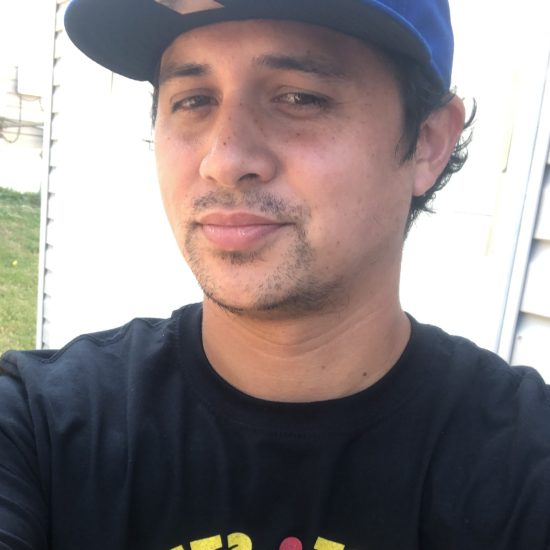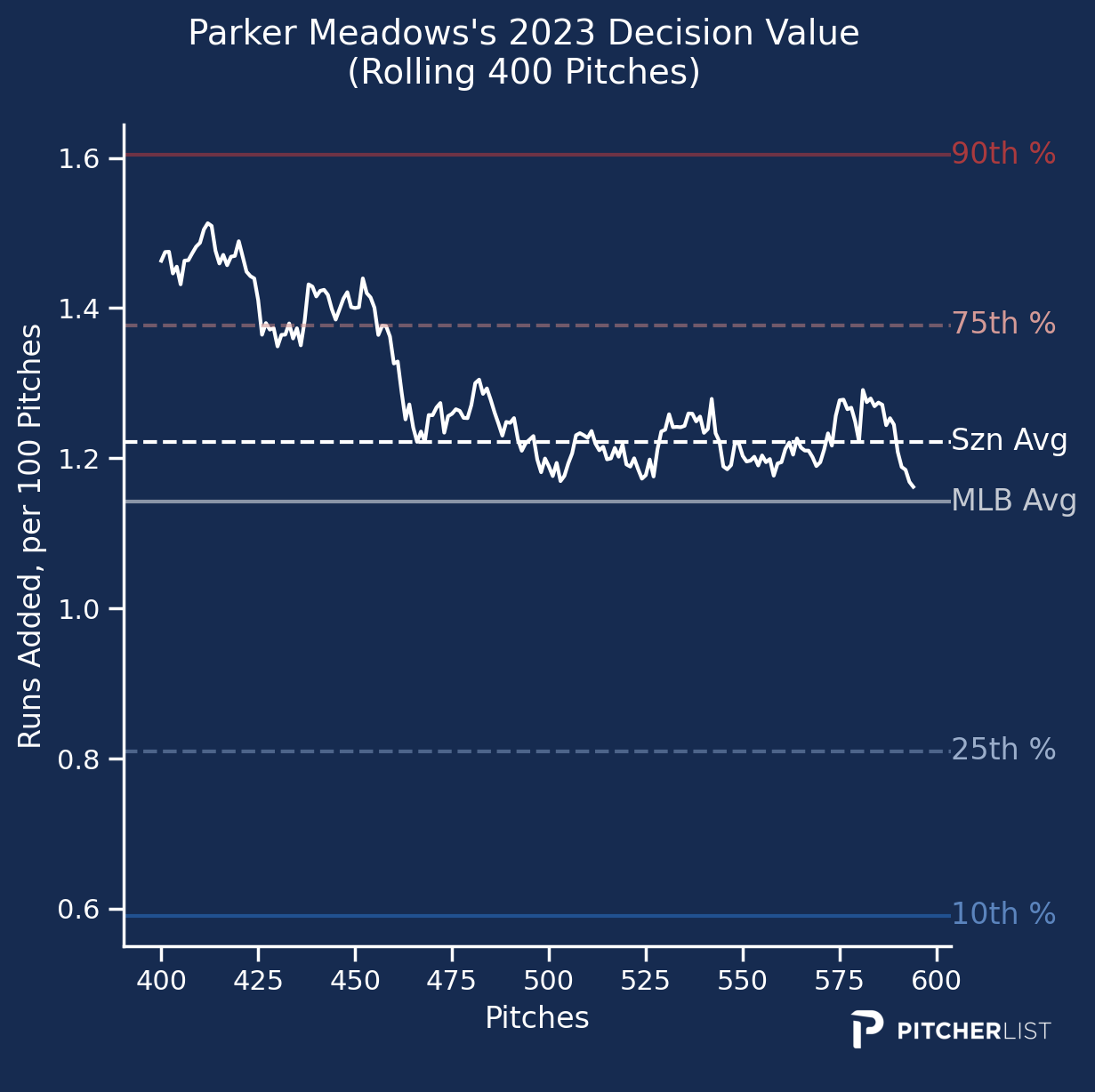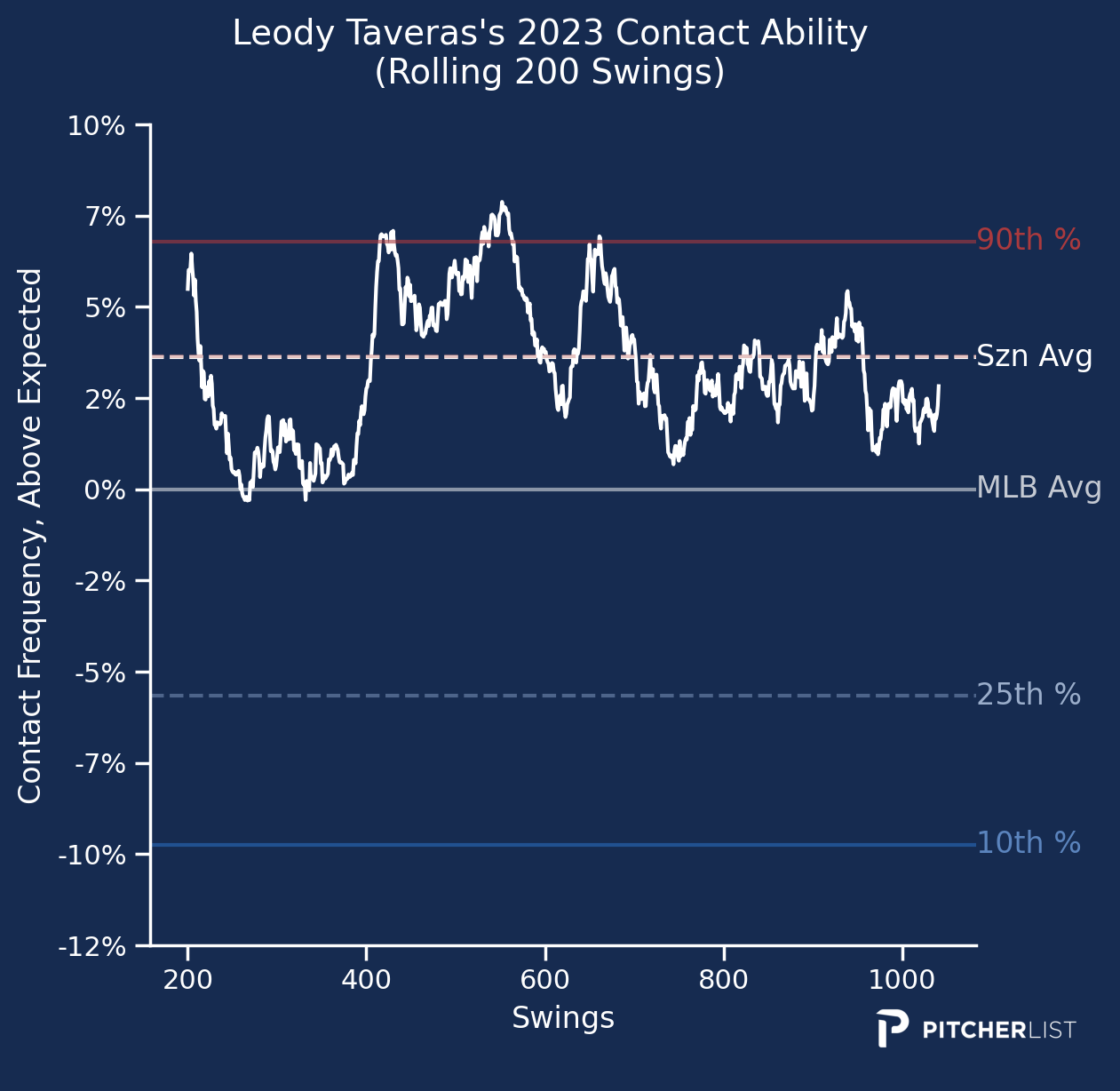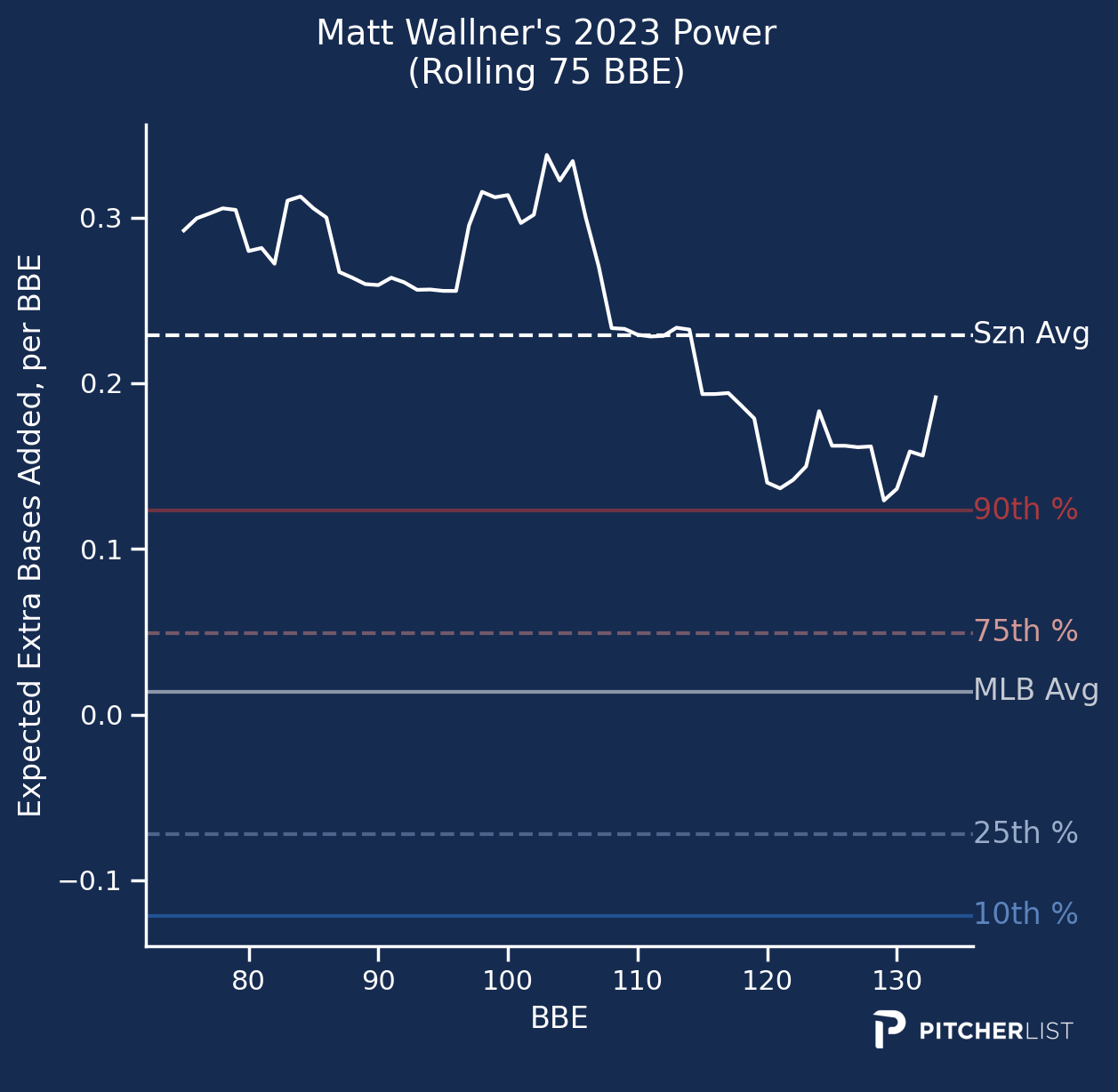Regarding outfielders for the upcoming 2024 fantasy baseball season, the first-round selections of drafts everywhere will likely be peppered with players from this position.
When looking at NFBC ADP outfielder rankings for the upcoming season, Ronald Acuña Jr., Julio Rodríguez, Corbin Carroll, and Mookie Betts all sport ADP rankings within the top five. The top 10 outfielders ADP-wise also include Kyle Tucker, Fernando Tatis Jr., Aaron Judge, Juan Soto, Yordan Alvarez, and Luis Robert Jr. All six of those players could end the season as top-five performers, especially considering their tremendous power profiles.
Nonetheless, depending on the league, teams will need to fill 3-5 outfield spots on their roster, and that’s not including leagues that feature utility spots. While it’s easy for fantasy managers to fill out their first couple of outfield spots early in the draft, it can be a more daunting task in the later rounds, especially when more pressing roster issues require attention (i.e. catching, infield, pitching, etc.).
In this article, we take a look at five outfielders who will be going later in drafts and could surprise and boost the roster of fantasy managers who are willing to take a flier on them for the upcoming season.
*All ADP data via NFBC as of February 18th.
Parker Meadows – 293.94 ADP*
Meadows earned a call-up with the Tigers at the end of the season and produced a 1.0 fWAR in his first 37 games and 145 plate appearances at the Major League level. The 2018 2nd-round pick only hit .232 in his debut, but he posted a more encouraging .331 OBP and .699 OPS, hit three home runs, and stole eight bases on nine attempts.
Based on his encouraging debut, ZiPS is projecting Meadows to hit 16 home runs, steal 14 bases, and score 74 runs in 532 plate appearances. Hitting for a high average may never be in the cards for Meadows, but his patient eye is a plus and was further confirmed by his decision value data in 2023 via PLV.
Meadows produced a rolling decision value PLV chart last year that was consistently above the league average in his limited sample. Compare that to Riley Greene, who ranks 40th for outfielders in NFBC with an ADP of 167.48, and his more inconsistent decision value chart from a season ago.
- Courtesy of Pitcher List
- Courtesy of Pitcher List
Comerica Park is not exactly a haven for home runs or even doubles, according to Savant Park Factors. On the flip side, it was the second-best ballpark in the league for triples in 2023, behind only Coors Field in Denver. Even though Meadows doesn’t sport traditional big-fly power, his PLV batted ball profile shows that he can hit line drives in the gaps (especially to right-center). That could play into Comerica’s spacious dimensions over a full season of play and help boost him in the average, slugging, and OPS categories in 2024.

Courtesy of Pitcher List
Meadows also sported a .324 xwOBA a season ago, which was 16 points better than his actual wOBA of .308. He also had an xBA that was 16 points higher than his actual BA and an xSLG that was 21 points higher than his actual SLG. Add that to an average exit velocity of 89.3 MPH and barrel rate of 7.9%, and it’s not out of the question to think that Meadows could produce something close to not just his ZiPS projections but his overall stat line in Triple-A in 2023 (.256 average; .812 OPS; 19 HR; 19 SB in 113 games).
Roster Resource projects Meadows to be the Tigers’ leadoff hitter and starting center fielder on Opening Day. The only competition in the outfield he should have on the current roster would be from Akil Baddoo, who has had two lukewarm seasons and has shown that he may not be a fit for centerfield, and Matt Vierling, who’s more of a platoon utility type that likely will play more corner infield and outfield in 2024.
Leody Taveras – 275.89 ADP*
A former Top-100 prospect back in 2017 and 2018, according to Baseball America, Taveras struggled initially in his first few years in the Majors.
In his first 181 games with the Rangers from 2019 to 2022, Taveras accumulated a 1.3 fWAR and only hit .227 and .161 in 2019 and 2020. While he did bounce back and hit .261 in 2022, he only hit five home runs and stole 11 bases in 99 games and 341 plate appearances. Promising? Sure, but not enough to warrant a roster spot in most league formats.
Taveras though did get a more extended look in 2023, mostly thanks to the injuries that Texas dealt with at the beginning of the year. The former top Rangers prospect received a career-high 543 plate appearances, and over that sample, he slashed .266/.312/.421 with 14 home runs and 14 stolen bases. Taveras also posted a barrel rate of 7.2% and a hard-hit rate of 42.4%, both career highs.
Fellow Rangers outfielder Evan Carter is getting a lot of buzz after a breakout performance in the postseason. According to NFBC, he is the 29th-ranked outfielder in fantasy with an ADP of 125.34. That said, while he is going around 150 spots earlier than Taveras in most draft formats, it’s not like Carter tremendously outperformed Taveras last year (and did so in a much smaller sample as well).
There’s no question that Carter offers more upside in power and on-base ability (thanks to a walk rate that is nearly 10% higher than Taveras’). On the other hand, Carter’s BABIP of .412 was unsustainably higher last year. As a result, the gap between his xwOBA and Taveras’ wasn’t as wide as the wOBA gap.
Furthermore, there should be concerns with Carter’s strikeout issues last season and how that will fare over a full season. Carter posted a K rate that was 10.9% higher than Taveras’ last year, and his contact ability PLV rolling chart also presented some red flags, especially compared to Taveras.
- Courtesy of Pitcher List
- Courtesy of Pitcher List
Taveras had a season average of contact frequency that stayed around the 75th percentile and he touched the 90th percentile on frequent occasions as well. Conversely, Carter’s contact frequency was around the 25th percentile for most of his small sample with the Rangers last year.
Now, am I saying that Carter is going to be worse than Taveras? Not at all. Carter still carries more upside and a higher ceiling than Taveras.
On the other hand, for fantasy managers who want to get a productive outfielder with 15-15, maybe 20-20 HR-SB potential, and a decent average, then Taveras may be worth waiting on later in drafts. As great as Carter is, he will need to be targeted much earlier in drafts, as his ADP likely will continue to rise, especially as we get closer to Opening Day.
Matt Wallner – 345.94 ADP*
Byron Buxton and his health have garnered the most attention in the Twins camp this spring, but Wallner is a sleeper who could be key to the Twins repeating as AL Central champions in 2024.
In addition, he’s an outfielder who probably isn’t getting enough attention in the Twins lineup for fantasy purposes for the upcoming season either.
Last season in 76 games and 254 plate appearances, Wallner slashed .249/.370/.507, hit 14 home runs and collected 41 RBI. While his career batting average (.244) may be a liability in his traditional 5×5 category leagues, his power and RBI potential make him a late-round outfielder who could provide 20-25 HR potential in 2024.
Wallner’s combination of excellent power and solid decisions at the plate make him an outfielder who can help fill out a fantasy team’s roster, especially at his ADP range. His power and decision value PLV rolling charts from 2023 confirm not only how successful he was at the plate a season ago, but how positive his outlook should be for the upcoming year.
- Courtesy of Pitcher List
- Courtesy of Pitcher List
Wallner being above the 90th percentile in both decision value and power stands out in this Twins lineup, even with hitters like Buxton, Kirilloff, and Max Kepler, who also fared well in both of those PLV categories in 2023.
The only issue with Wallner’s outlook will be if he will be platooned and the possibility of being the odd man out in a very left-handed heavy lineup. An encouraging sign for Wallner’s playing time outlook is that Willi Castro seems to be the only right-handed bat off the bench who could play in the outfield, according to Roster Resource’s projected Opening Day lineup.
Castro is a flexible player who offers speed to the Twins lineup. That said, it’s unlikely that he’ll affect Wallner, especially if Wallner continues to sport his excellent eye and big fly power in 2024.
Mitch Haniger – 530.53 ADP*
Haniger had a bad lone year in San Francisco in 2023. Granted, a lot of that was injury-induced, as he only played in 61 games and accumulated 229 plate appearances. That said, his .209/.266/.365 slash and .274 wOBA were discouraging, and a major downgrade from his .319 wOBA in 2022, which also was affected by injury (he only played in 57 games that year).
Haniger finds himself back in the Pacific Northwest, a club he played with for five seasons before he signed a free-agent deal with the Giants before the 2023 season. Fantasy expectations are low for Haniger, as his 530.53 ADP signifies that he’s likely going undrafted in most traditional 10 and 12-team formats.
On the flip side, in deep leagues, Haniger should be a possible last-round target, especially for fantasy managers who want to be judicial with their outfielder investment in their respective drafts.
Here’s a look at Haniger’s decision value PLV rolling chart from 2023 and it doesn’t look like one of a hitter who posted a 73 wRC+.

Courtesy of Pitcher List
At the very least, Haniger was making sound decisions at the plate. Unfortunately, the batted ball luck and profile didn’t produce any results. In terms of the former point, Haniger sported a .270 BABIP, his lowest mark in that category since 2019. As a result, his xwOBA of .317 was 43 points higher than his actual wOBA last season.
Batted ball luck will likely regress on a positive end for Haniger, especially considering his familiarity with T-Mobile Park (though it’s just as pitcher-friendly as Oracle Park in San Francisco). That said, it wasn’t all luck that affected Haniger a season ago, as his batted ball profile with the Giants didn’t do him any favors.
Here’s a look at his batted-ball profile difference between 2023 and 2022.

Courtesy of Pitcher List
Based on his batted ball chart, Haniger pulled the ball way less in 2023. Even though he did hit a lot of line drives and flyballs that could be productive, that didn’t exactly fit into Oracle Park’s spacious profile.
For Haniger to get back to where he was a couple of seasons ago when he was a 39-HR hitter, he will need to pull the ball more often, like he did two seasons ago.
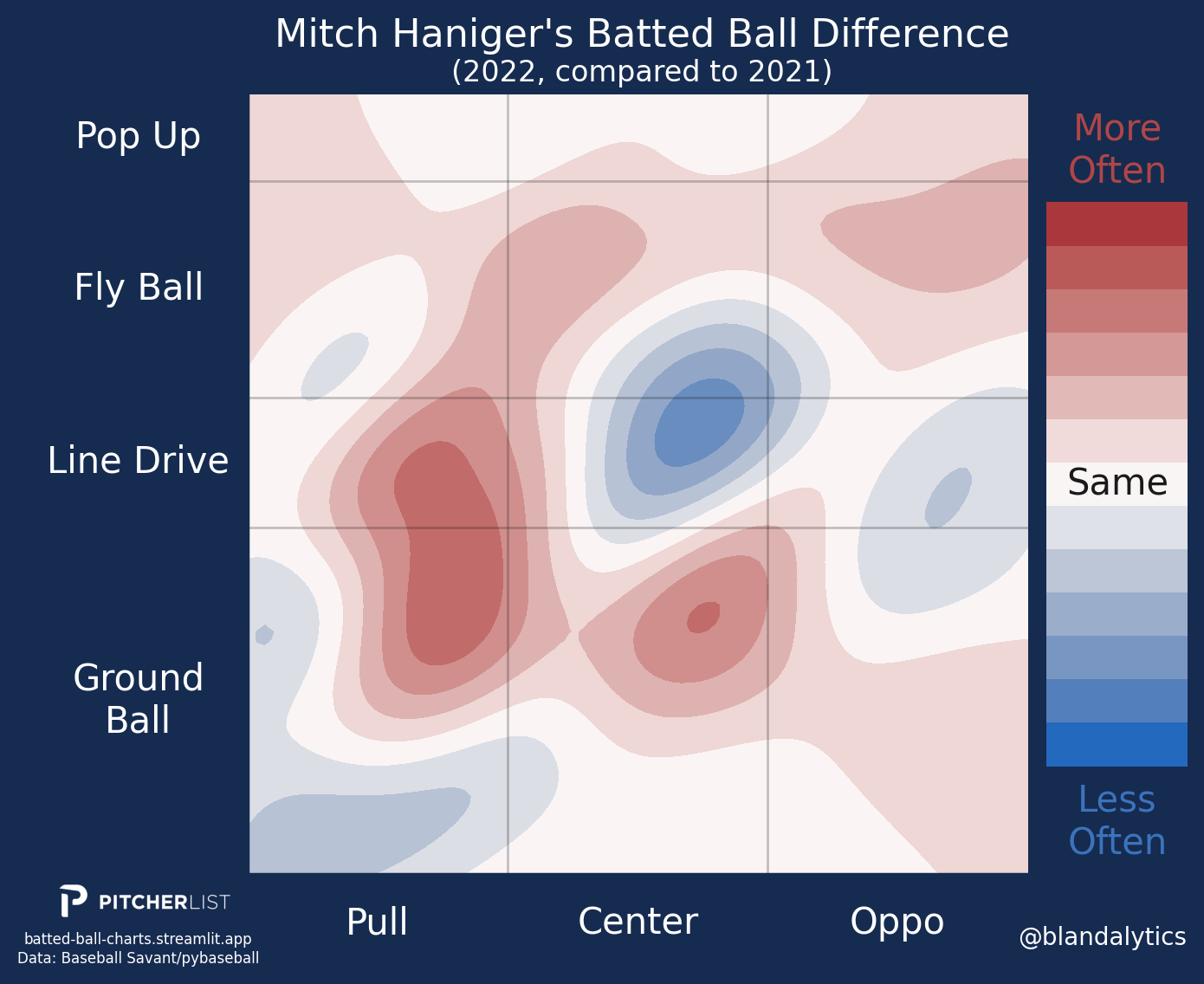
Courtesy of Pitcher List
If Haniger can get back to pulling the ball more in Seattle than he did in San Francisco, he could be due for a 20+ HR season. That wouldn’t be bad value for a guy who’s going undrafted so far early in the draft season.
Jake Fraley – 326.13 ADP*
Fraley gets lost a bit in the Cincinnati outfielder shuffle, as TJ Friedl (150.31 ADP) and Will Benson (299.97 ADP) are getting more attention from fantasy experts. However, let’s take a look at the numbers from a season ago of all three Reds outfielders.
Fraley falls in the “middle” between Benson and Friedl in many different categories, which makes him an intriguing option in his ADP range. His ISO and BB/K ratio is right at Friedl’s levels from a season ago, and he also produced an intriguing slash (.256/.339/.443) despite sporting a BABIP that was 25 points lower than Friedl’s.
Thus, for fantasy managers looking for an outfielder like Friedl but unable to pick him at that ADP range, Fraley could be a nice consolation prize nearly 176 picks later.
Benson may be enticing for fantasy managers who like his power outlook, especially when playing home games in a hitter-friendly haven like Great American Ballpark. That said, a comparison of Fraley and Benson’s contact PLV rolling charts from 2023 should perhaps give fantasy managers who are considering Benson over Fraley some pause.
- Courtesy of Pitcher List
- Courtesy of Pitcher List
Both saw considerable dips in contact frequency later in the season. However, Benson’s hovered under the 10th percentile while Fraley’s at least stayed around the league average.
Benson is a fun outfielder to dream about. On the flip side, Fraley may be the safer Reds outfielder selection and is one fantasy managers can pick up two to three rounds later.

